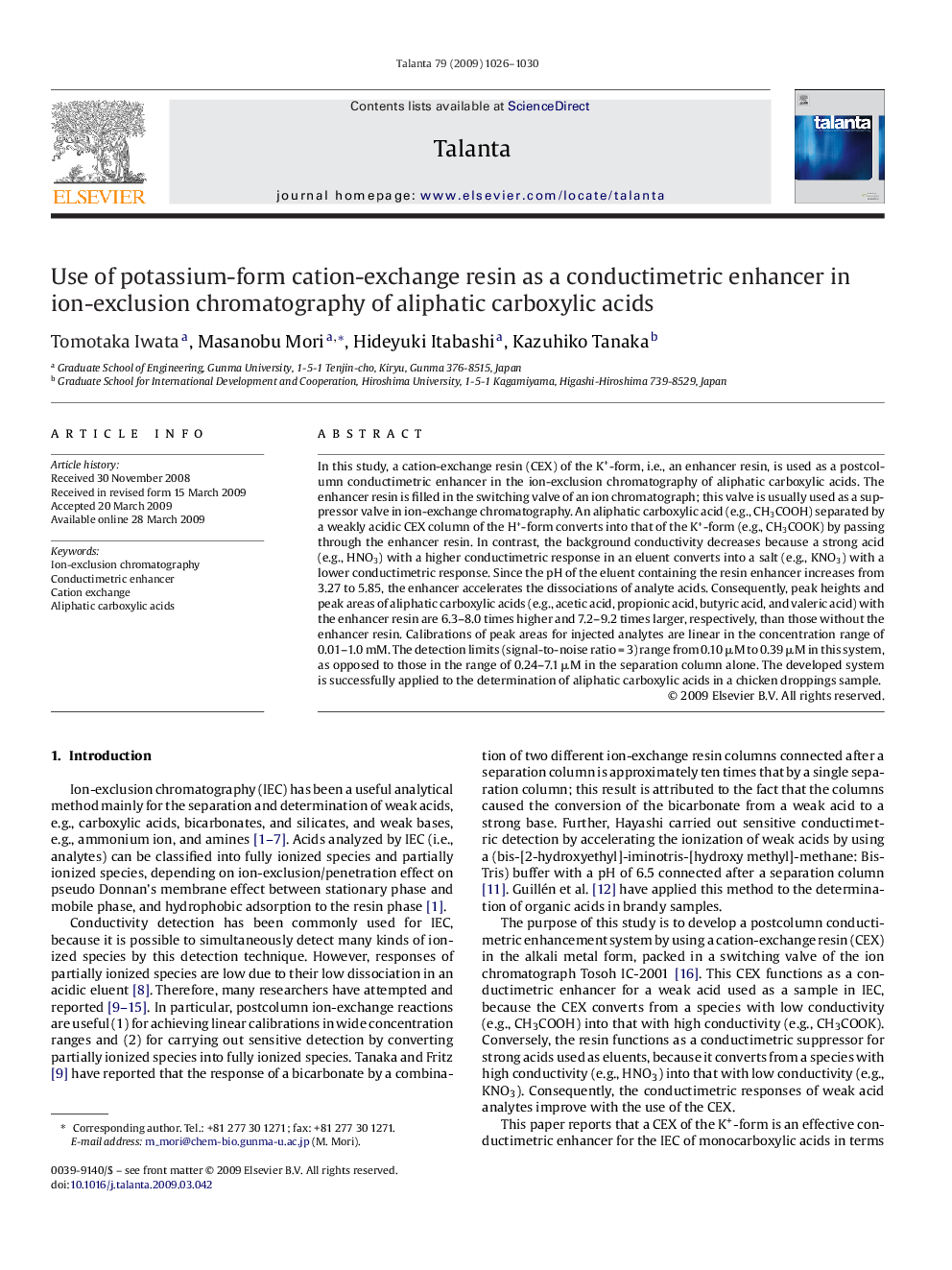| Article ID | Journal | Published Year | Pages | File Type |
|---|---|---|---|---|
| 1243858 | Talanta | 2009 | 5 Pages |
In this study, a cation-exchange resin (CEX) of the K+-form, i.e., an enhancer resin, is used as a postcolumn conductimetric enhancer in the ion-exclusion chromatography of aliphatic carboxylic acids. The enhancer resin is filled in the switching valve of an ion chromatograph; this valve is usually used as a suppressor valve in ion-exchange chromatography. An aliphatic carboxylic acid (e.g., CH3COOH) separated by a weakly acidic CEX column of the H+-form converts into that of the K+-form (e.g., CH3COOK) by passing through the enhancer resin. In contrast, the background conductivity decreases because a strong acid (e.g., HNO3) with a higher conductimetric response in an eluent converts into a salt (e.g., KNO3) with a lower conductimetric response. Since the pH of the eluent containing the resin enhancer increases from 3.27 to 5.85, the enhancer accelerates the dissociations of analyte acids. Consequently, peak heights and peak areas of aliphatic carboxylic acids (e.g., acetic acid, propionic acid, butyric acid, and valeric acid) with the enhancer resin are 6.3–8.0 times higher and 7.2–9.2 times larger, respectively, than those without the enhancer resin. Calibrations of peak areas for injected analytes are linear in the concentration range of 0.01–1.0 mM. The detection limits (signal-to-noise ratio = 3) range from 0.10 μM to 0.39 μM in this system, as opposed to those in the range of 0.24–7.1 μM in the separation column alone. The developed system is successfully applied to the determination of aliphatic carboxylic acids in a chicken droppings sample.
